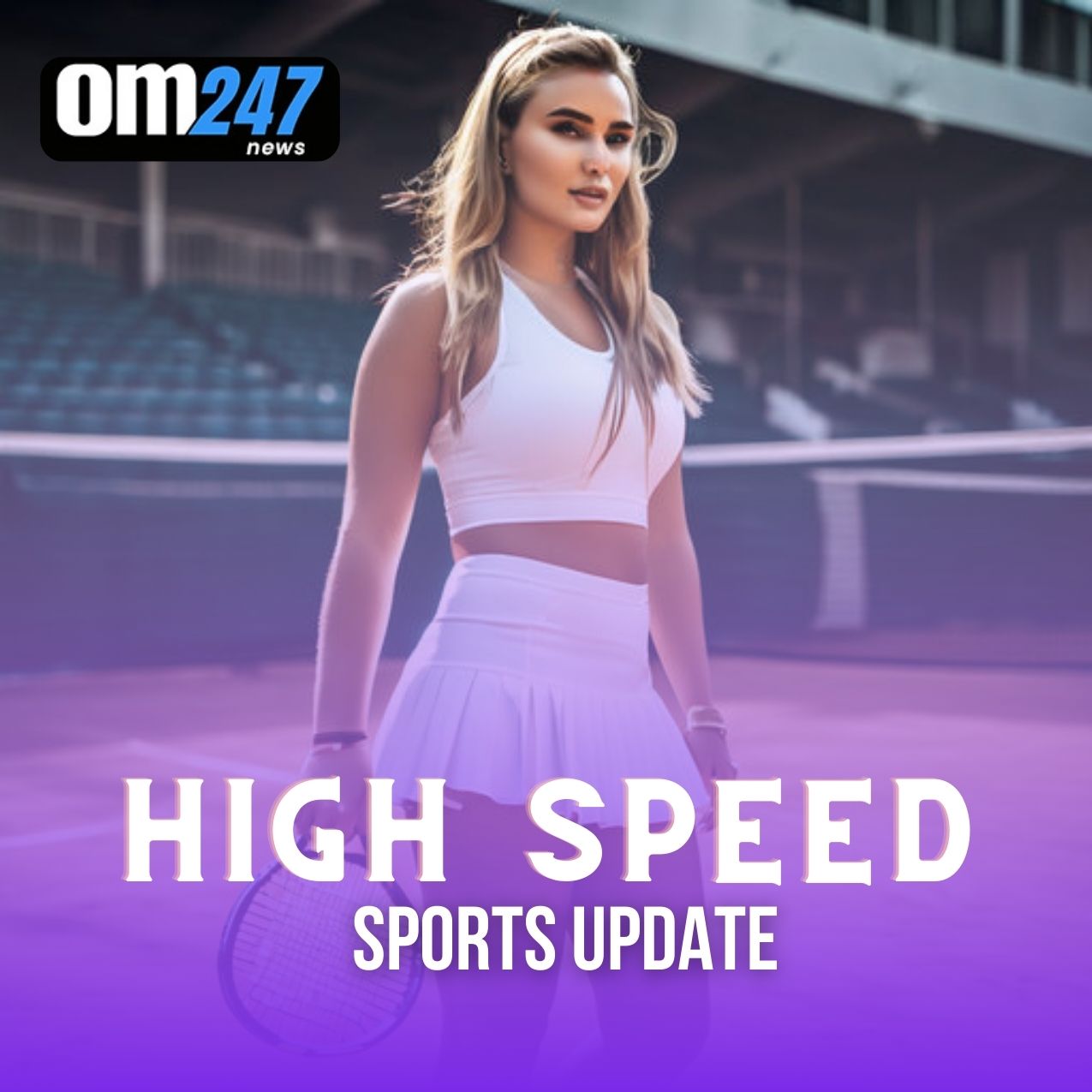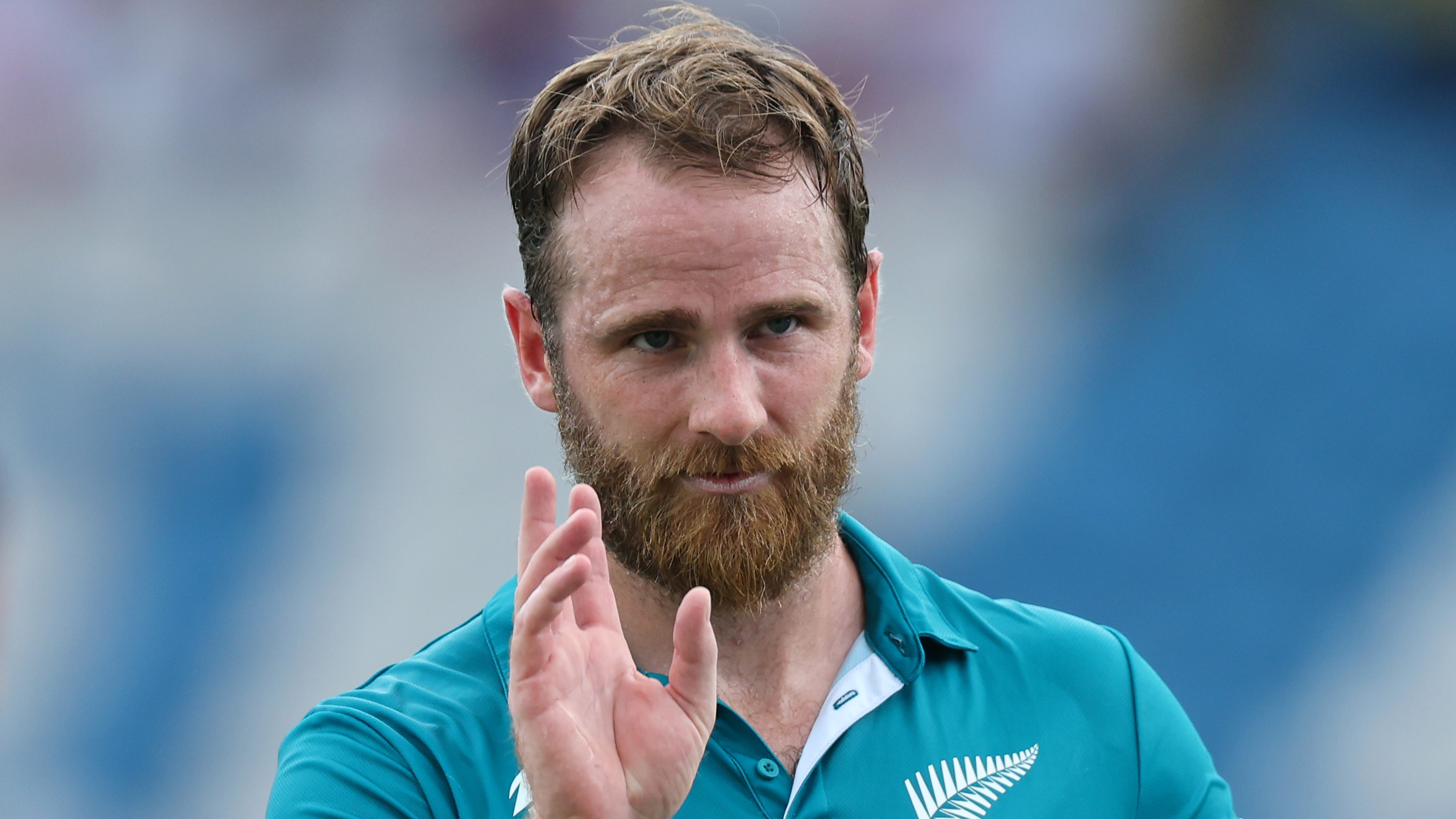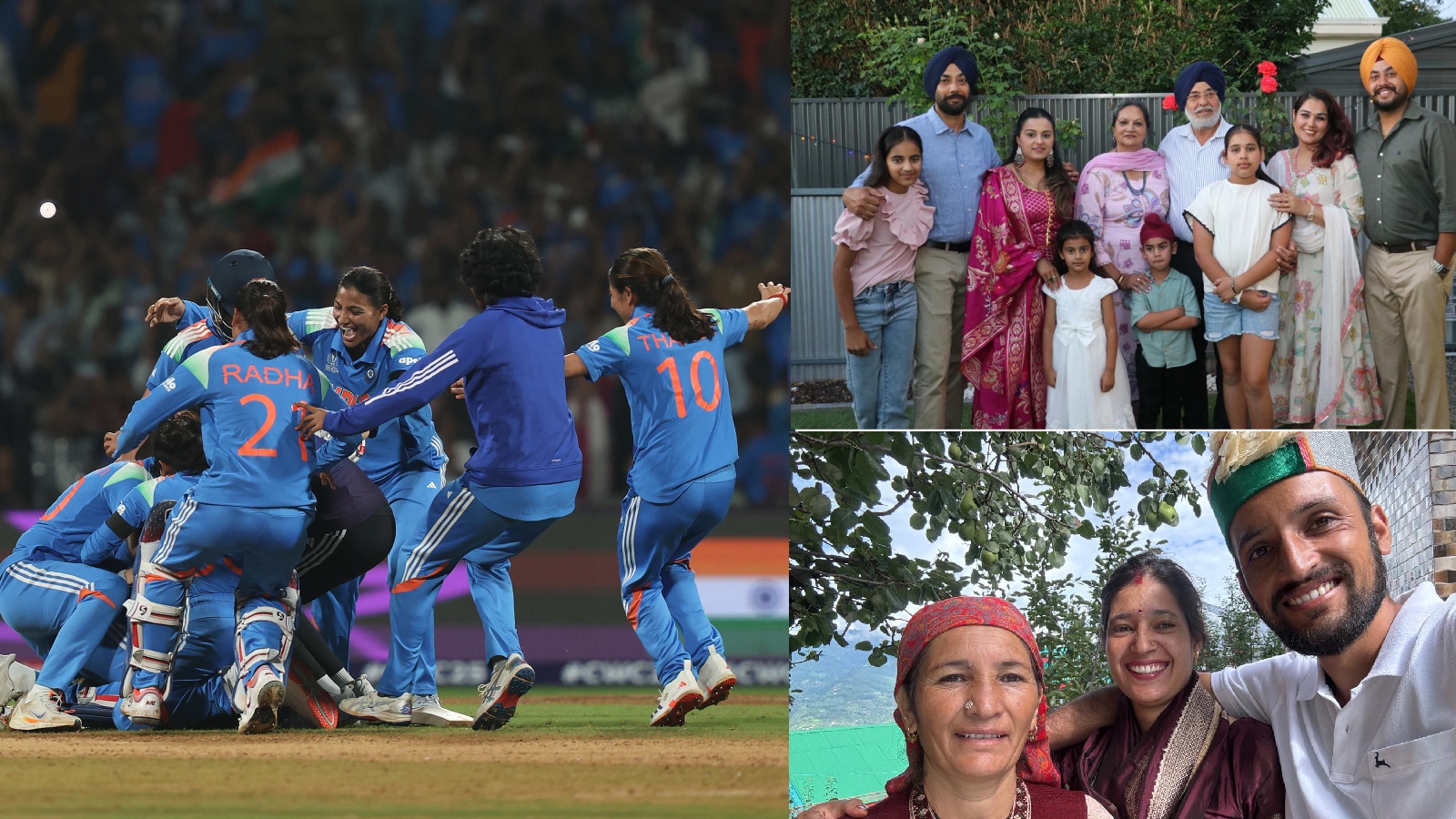Horse racing replays edited to remove falls and deaths as industry grapples with social licence
Loading...What happens when the race that stops the nation also stops you from seeing the horses that don't finish?Warning: This story contains distressing images.One minute, Anthony Van Dyck is rounding the turn, preparing to thunder down the famous Flemington straight.The next, he's gone.It's Tuesday, November 3, 2020, and the Melbourne Cup is being held in eerie silence — the COVID-19 pandemic keeping the crowds at home, glued to screens.Jockey Hugh Bowman, his pastel pink silks almost white in the spring sun, urges Anthony Van Dyck for a final effort.But a muted groan echoes through the near-empty grandstand as the galloper stumbles.A beat passes. The blue-blooded stallion rears, slows, then comes to a sweat-soaked stop.It's a moment that lives only in the memories of the select few permitted trackside that day.That's because the official race replay shows something else entirely.Just before Anthony Van Dyck stumbles, the replay cuts to an isolated 12-second shot of eventual winner Twilight Payment, ears pinned back, surging for the post.Loading...By the time the shot zooms back out for the final 200 metres, Anthony Van Dyck is gone.In those 12 seconds, the English Derby winner broke down and fell back through the pack, out of frame.His fetlock was fractured.Bowman dismounted and removed his saddle as the rest of the field galloped on.Anthony Van Dyck was loaded into the horse ambulance and euthanased soon after.What the industry wants you to remember is the isolated image of a free-wheeling equine athlete at full stride.But this is what was erased.Loading...Anthony Van Dyck was the sixth horse to die after competing in the Melbourne Cup in a seven-year stretch.But he was the first to be edited from the replay entirely.They're off!Thoroughbred racing was once the sporting lifeblood of the nation.These days, it surges into the nation's public consciousness during the spring and autumn carnivals only, its cultural dominance diminished to punchy periods when football, rugby and cricket pause for breath.Loading...Yet the industry generates $9.5 billion a year and employs about 75,000 people — a number that more than doubles when volunteers are counted.In the 2022–23 season, more than $26.3 billion was wagered on thoroughbred racing alone, down slightly from a record $29.1 billion the previous racing season.The industry didn't release wagering data last season, the first time it hasn't done so in decades.Size and money, however, have not shielded racing from scrutiny.A new generation of activists has put the sport's social licence under pressure.At the same time, the industry has begun moving swiftly to protect its image, systematically removing any footage that could provide activists ammunition.But it's not clear when this started: there's no official line in the sand for when the policy was implemented.Nor is there any national consistency with its implementation.What happens when a horse or rider falls largely depends on where and when it happened.State to stateThoroughbred racing is administered on a state-by-state basis.As a result, the way fatal injuries and falls are handled varies by postcode.In Victoria, the edits are swift and precise.Often, the only giveaway is the race skipping forward almost imperceptibly: a few hundred metres vanish with no audio jump, no obvious cut.Loading...Weekend Lover died after breaking down mid-race at Geelong on September 25.He was removed from the race replay and the head-on stewards' footage was never published.Loading...Five days earlier, Chorlton Lane — wearing the pink and black cap at towards back of the field — broke down in the final stages of a Group 1 race at Caulfield.The replay subtly zooms in to push the horse out of frame during his last moments, sparing viewers the colt's graphic injury, which was displayed during the live broadcast.Victoria is the only state to still host jumps racing, where falls are also routinely edited from replays.Loading...In New South Wales, things aren't as cut and dry.Three-year-old Tyreek was put down after crashing through the home-straight running rail at Rosehill on August 30.The replay vanished from the Racing NSW website, but snippets of the incident remain on social media.Loading...But not all equine fatalities in NSW are removed.Wannawinwin broke her leg at Grafton on June 9, while Promising Prospect died after breaking his off-fore sesamoid at Wyong on May 1.Both replays remain available, albeit the incidents are less graphic.Loading...Recent examples in Queensland remain unedited.Raudkivi's fatal step at the Gold Coast in September remains in the replay, while Maybe Smart's demise at Gatton on June 28 can be seen in stewards' footage.Loading...The race in which The Indigo Falcon was fatally injured at Murray Bridge in South Australia also remains online.It is housed on the same platform as Victorian racing, Racing.com.Loading...Tasmania takes a hardline approach.Freiburg's death in Hobart has been completely removed from the replay.The race caller's lingering comment — "Freiburg has, uh, fell to the track as they turn to home" — is the only record of the incident.Loading...Giddy Up Grunt — who died in a trial at Lark Hill, south of Perth in Western Australia — also had his final moments erased.A post-mortem exam of the horse found traces of phenylbutazone, a sedative colloquially known in the industry as bute.Stewards are investigating that matter.The result is a confusing patchwork with one constant: no warnings.Viewers have no way of knowing if a race has been edited, and unedited replays carry no warning about what they're about to see.And it is not just equine fatalities and falls being censored.On the cutting room floorOn September 14, Extreme Ally fell during a race at Kilmore in north-east Victoria.Apprentice jockey Stephanie Hateley was thrown from the saddle when the horse clipped heels passing the 200-metre mark.The horse was uninjured, according to the stewards' report. No rider was penalised for the fall.Beyond that, little is known.All traces of the replay were removed from the industry's website.It is not known how Hateley is faring other than the fact she has yet to return to race riding.Six days earlier at Warrnambool, apprentice jockey Tom Prebble's mount Pulveriser fell at the 700-metre mark of a race.This fall was different.Pulveriser received a minor cut to his near fore elbow, but Prebble was flown to hospital with significant spinal cord injuries.He's unlikely to ever ride again.Four weeks after the fall, Prebble told racing media he had no feeling below the T4 level of his spine.The replay was edited, the fall removed, and the stewards' footage pulled from public view.Loading...Jockey deaths, though rare, are never shown in race replays, no matter where they occur.The last jockey to die as the result of a fall in Australia was Italian jockey Stefano Cherchi, 23, who died two weeks after being injured in a fall in Canberra in March 2024.Putting your foot downDanny Brereton knows the risks of racing better than most.Loading...At his peak, he was considered one of Victorian racing's premier riders, notching more than 1,000 career wins, including 13 Group 1 races in Australia and overseas.That came to an abrupt end when the horse he was riding clipped the heels of another horse at Moonee Valley in August 2010.His mount, Marquee Player, crashed to the turf.Brereton's back and neck were broken in a catalogue of injuries that nearly killed him.Twice, paramedics brought him back from the brink.The fall was broadcast live and the replay remained online for years, Brereton remembers."Then they went woke and pulled it down," Brereton said.It is not available on the industry-owned website today.Hiding footage of racing incidents undermines both safety and accountability, according to Brereton."I don't like the deception of hiding it," he said.The only exception, Brereton said, should be incidents in which a jockey died, or particularly gruesome equine injuries.If the public saw more falls, he argues, pressure would force the industry to act on those where a rider's at fault."If they show the falls, the public will probably be a little bit outraged and it will probably force the people in racing to say, 'Hey, we're gonna stop this,'" he said.His solution: harsher penalties for jockeys who cause falls."What should be shown is what other jockeys do to their workmates," he said."If that was pushed home further, jockeys would care for each other a bit more."Current suspensions for careless riding typically result in about a month-long ban. Brereton wants a three-month minimum."A month? They'll take a chance. Three months? No-one in the world [would risk it]."Brereton's not the only one pushing for greater transparency and accountability.But whether officials are listening is another matter.Transparency questionedRacehorse owner and syndicator Jason Abrahams was gutted when three-year-old gelding Tyreek, the horse that was edited out of a NSW replay, was euthanased.The industry's response to the fatality, however, left him questioning what the sport stood for.A stewards investigation found jockey Tommy Sherry, who won the race aboard Grand Prairie, was responsible for the fall.He was handed a month-long suspension for careless riding.Mr Abrahams, who part-owned and syndicated the horse, was dumbfounded the death resulted in "a lenient penalty" where Sherry retained his cut of the prize money.He requested a transcript of the stewards' hearing and asked to meet chief steward Tom Moxon to discuss it.Mr Moxon declined the meeting request and instead offered to respond to questions in writing.Any request for a transcript of the hearing would need to be directed to Racing NSW chief executive Peter V'landys, Mr Moxon said in his email."That all seemed strange to us," Mr Abrahams said.The replay was subsequently removed from the Racing NSW site."If it's that bad you don't want to show the video of it, then deal with it in an appropriate way," he said.Some of Tyreek's 20 owners have already told Mr Abrahams they won't return to racing.None received any communication from Racing NSW after the incident.The experience has impacted Mr Abrahams' perspective on an industry he loves and has long defended."You feel like the horse is just a commodity and that's not what the industry stands for," he said."The people who work in the industry at a ground level care more about the horses than they do about their own families."But at an industry level, [administrators] do need to show some compassion and see where they're heading."We won't have an industry if you can't get the support of the public."The industry's responseAustralian racing is run by state-based principal racing authorities (PRA).The ABC reached out to each state PRA, requesting an interview and providing a detailed list of questions.None took up the offer.The Victorian, South Australian, Tasmanian and West Australian authorities provided short statements attributed to unnamed spokespeople.The comments provided by Racing Victoria and Racing SA were identical, including the non-attributable background information."Where serious incidents involving riders and/or horses occur on raceday, our broadcast and production team refrain from replaying the incident thereafter across all platforms," the statements read.It's not clear why a fatal incident remains in a South Australian replay, despite this stance.Racing Victoria and Racing SA have formal policies regarding editing, but did not answer questions about the policy's design, updates, or implementation.Unedited footage is retained by the industry in those states.In Western Australia, a spokesperson confirmed unedited footage was also retained as part of a "long-standing and responsible approach"."Racing WA does not include footage of racing incidents in publicly accessible replays of races and trials, out of respect for the welfare of horses, jockeys and drivers, and the sensitivities of all involved," the spokesperson said.A Tasracing spokesperson said that PRA hadn't changed its approach since 2011."When a racing animal falls or is injured, Tasracing does not believe the incident should be broadcast," the spokesperson said.Racing NSW and Racing Queensland did not respond by deadline.The ABC also requested interviews with representatives of Tabcorp — which runs the racing broadcast channel Sky Racing — the Australian Jockeys' Association and Australian Trainers' Association, none of whom responded..Racing Australia and the Victorian Racing Integrity Commissioner directed the ABC's questions to the respective PRAs.The ethical quandaryWhether an industry should be able to edit its own record is not a legal question. No laws are being broken.It is a matter of ethics and social licence — the unwritten agreement by which the public permits a practice to continue.For UNSW associate professor of sport and sociology Nick Apoifis, the video edits provide a paradox."In the first instance, it's quite clear to see that editing out fatalities or serious harm to animals, and indeed people as well, may seem compassionate," he said.Loading...Dr Apoifis said he had witnessed the care trainers and stable staff showed their horses.But withholding information about what went wrong, he said, invited scrutiny."It creates a vacuum … allowing activists to get in, [and start] holding sports accountable, holding multi-million and billion-dollar industries accountable," he said.Anti-racing groups archive and distribute the deleted footage across social media — turning the incidents racing wants hidden into rallying points."I think the less that sports show, the more dangerous it is in this current environment for their social licence [and] their brand," Dr Apoifis said.Tim Dean, a senior philosopher at The Ethics Centre in Melbourne, questioned the legitimacy of the industry's "compassionate" reasoning."If distress and that kind of thing is the main justification, then why would that not also apply to the live events?" he said.Dr Dean said content warnings would preserve both transparency and sensitivity."Then, arguably, there's sufficient reason to allow that footage to exist," he said.The tension between preserving and hiding is not unique to racing. Media outlets routinely face decisions about showing distressing content.When Chorlton Lane broke down at Caulfield on September 20, Seven Network's news division published an online article highlighting the death.But Racing.com — the platform that broadcasts Victorian racing on the Seven Network, which is majority owned by Racing Victoria — edited the horse's death out of replay.Two arms of the same media company: one reported the death, the other erased it."It can make the sport appear deceptive," said Monash University journalism academic Julie-Ann Tullberg."[Editing footage] harms credibility by making the sport appear less accountable and less honest."Tim Dean said racing was likely on borrowed time.The story in other sportsThe global sporting field is scattered with defining moments of tragedy.The cricketing world communally drew breath when Phil Hughes died in 2014; likewise, the Formula 1 fraternity when Jules Bianchi died after crashing in a rain-soaked Japanese Grand Prix in the same year.The replays of both incidents have been removed from the sports' official websites entirely, yet others discussing the deaths remain.Other non-fatal but still graphic incidents in both sports remain online.Romain Grosjean's fiery crash in Singapore, for example, lives on in perpetuity, as do a plethora of cricketing body blows, including some that led to the early concussion-related retirement of prodigious opener Will Pucovski.Concussions are front of mind for Australia's football codes, also.The bump that ended the career of Melbourne midfielder Angus Brayshaw remains on the AFL's website, for example, likewise a litany of hits and misses in the NRL.Victorian racing's approach suggests not just a national inconsistency, but a specific turning point.Between 2013 and 2020, six horses died either during or after running in the Melbourne Cup.Four died as a result of injuries sustained during the race itself: Verema (2013), Red Cadeaux (2015), The Cliffsofmoher (2018) and Anthony Van Dyck (2020).All were internationals.Loading...Loading...For the first three, the fatal moment remains in the replay.Anthony Van Dyck was different. His was the first replay to be edited.The Victorian industry responded to his death by introducing a swathe of pre-travel veterinary protocols "to protect the long-term integrity and sustainability of Victoria's premier races", a participant brochure says.All Melbourne Cup runners have to undergo a CT scan before being allowed to race, in addition to two pre-race inspections by an industry-approved vet.Those scans prompted this year's pre-race cup favourite, Sir Delius, to be scratched just weeks out from the race after it was deemed the horse was at "heightened risk of injury".And the new welfare standards haven't been without contention.Racing Victoria's chief vet, Grace Forbes, claimed to the Fair Work Commission she was allegedly pressured to allow horses at high risk of catastrophic injury to race, according to the Herald Sun.It's a matter that remains unresolved amid the spectre and celebration of spring.When they run the Melbourne CupThe first Tuesday in November looms.Another horse will soon etch its name on the Melbourne Cup honour roll.The industry is pushing an image of regeneration, of resurgence.Carnival crowds are increasing, with last month's The Everest meeting setting new records for wagering and attendance.Jockey Danny Brereton still keeps a close eye on the sport. He'll watch the cup, among other races.But he's worried about racing's future. About the sport, the horses, and the people involved."I'm scared for racing," he said."There's not enough proper interest in it. People don't want to learn about it.It's been five years since a fatality was entered in the cup's record books.If it happens again, those in the grandstand will know.Those watching after the fact may not.The 12-second cut will be waiting.Credits













